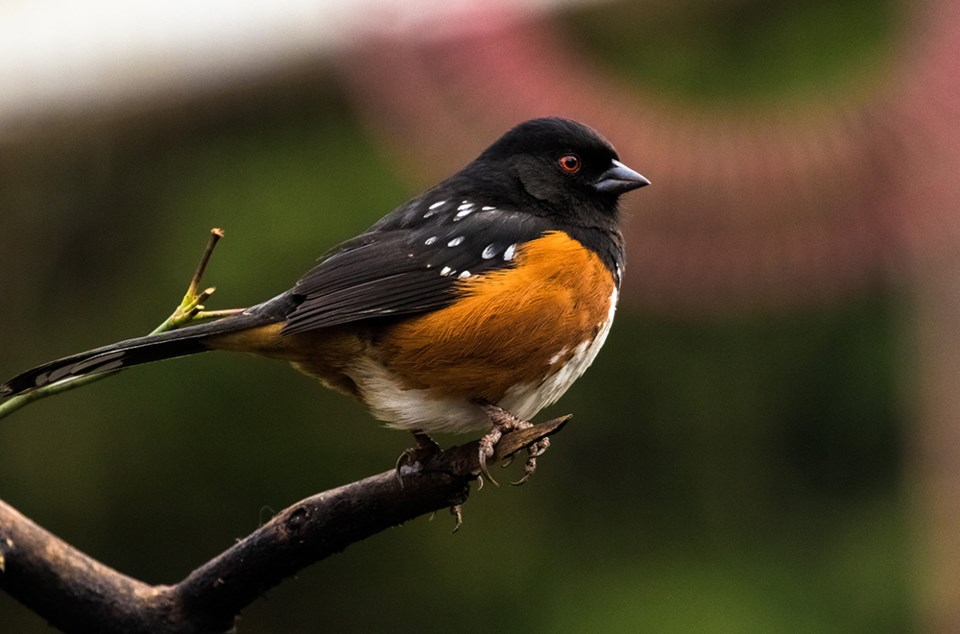PEANUT LOVER: Lying on its back in a cleared area off Fernwood Avenue, this spotted towhee was so badly concussed it was easily picked up. Although still alive, the bird had no reaction, no balance and no sight.
Its recovery was slow but steady. After five days at Powell River Orphaned Wildlife Society, the towhee was mostly upright and beginning to eat.
Strangely, head trauma victims usually have a good appetite. After nine days, it was moved into a slightly larger cage and would launch across it but miss the landing and stay on the bottom.
Improvement continued and at four weeks the towhee was moved into the small outdoor flight cage.
Even with a shoulder and wing still drooping, it could now zip about and soon discovered the peanuts stashed in the corners by the Steller’s jays. Yummy! Not a standard item in its regular diet, the towhee delighted in digging them out and devouring them.
Super excellent flight is not an essential skill for the towhee, since it nests and eats on the ground. However, this behaviour puts it at risk of being caught by prowling cats.
The spotted towhee is a large, handsome sparrow, gleaming black above, spotted and striped with bright white below. Their rusty-coloured flanks match the dry leaves they spend their time hopping around in, making them hard to see.
In the spring, males spend 70 to 90 per cent of their mornings sitting in the tops of shrubs, trying to attract a mate by singing a rapid buzzy song.
Spotted towhees are likely to visit, and even live in, your yard if you have brushy, shrubby or overgrown borders. Look low in shrubs or along the ground in places with rich leaf litter and dense stems.
Contributed photo



